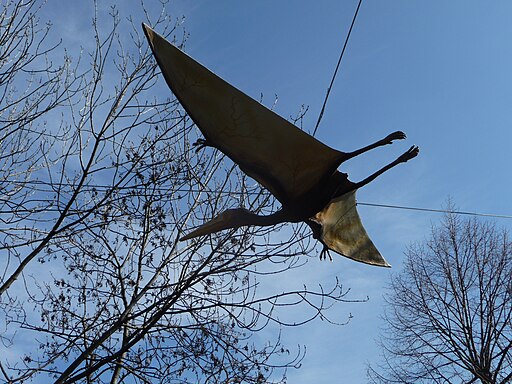The Early Flying Reptile
Pterodactylus, often referred to as Pterodactyl, was a genus of small pterosaur that lived during the Late Jurassic period, approximately 150 million years ago.

| Meaning | Winged finger [Ptero-dactylus] |
| Pronunciation | ter-oh-DAK-till-us |
| When: | Late Jurassic (about 150.8–148.5 million years ago) |
| Where: | Europe (Germany) |
| What: | Pterosaur (flying reptile) |
| Weight: | Estimated around 1–2 kg (2.2–4.4 pounds) |
| Length: | Approximately 1.5 meters (5 feet) wingspan |
| Diet: | Carnivorous or piscivorous (ate fish and small vertebrates) |
| Discovered: | First described by Georges Cuvier in 1809 |
These remarkable creatures were not dinosaurs but rather flying reptiles characterized by their membranous wings supported by an elongated fourth finger.
Pterodactylus had a wingspan of about 1.5 meters (5 feet), making them relatively small compared to other pterosaurs.
Pterodactylus had a long, pointed beak lined with sharp teeth, which it used to catch fish and other small prey. It had a lightweight skeleton and hollow bones, making it well-suited for flight.
Pterodactylus likely soared over ancient seas and coastlines, hunting for food and avoiding larger predators.
These ancient flyers are important for understanding the diversity of life during the Jurassic period and the early days of vertebrate flight.
